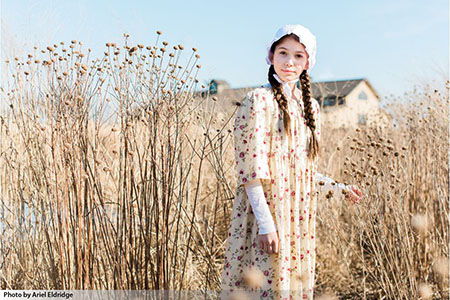
Laura Ingalls Wilder, author of the children’s series “Little House on the Prairie,” reveals to us how a “kitchen garden” was key to not only living but to living well. Pioneer families, like hers, found 80 percent of their food (as well as medicine, fragrances, dyes and herbs) from their gardens. Laura was quite proud of what their little garden produced.
Pioneer gardens were laid out using a combination of European garden plans and Native Indian practices. Ornamental flower gardens were not yet popular so the placement of plants within a garden was dictated by fragrance. Sweet smelling herbs and flowers were planted just under the kitchen windows. The strong smelling plants, such as cabbages, onions and chives were as far away from the window as possible. Plants that didn’t need to be completely pulled out of the ground each year were planted together so their roots wouldn’t be disturbed by the harvesting of annual crops. Root vegetables like carrots and parsnips were planted together. Because lettuces, radishes and onions were constantly being pulled, these veggies were planted together. Then, the melons, squashes, cucumbers and pumpkins were planted alone, using cabbages as edging, so every inch of the garden was put to good use.
Almost all kitchen gardens had a fence or hedges around the perimeter of the garden and frequently both were used. The hedges consisted of lavender, marjoram, savory, thyme, juniper, yews and even roses. On laundry day, sheets could be stretched and dried across the fragrant hedges. Move over, Downy!
A Native American tradition of planting called “Three Sisters Garden” illustrates how strategic combinations of planting were used in an ingenious way. A dead fish or eel would be buried in a circle of raised earth forming a mound. Corn would be planted in the center of the mound and pole bean seeds would surround the corn. On the perimeter of this little mound, squash was planted. The beans provided nitrogen needed by the corn, the corn provided the trellis support structure for the beans. The squash served as a leafy mulch, reducing soil temperature and preventing weeds from germinating by blocking out light.
Garden seeds were more readily available to buy or order after the Civil War, but pioneers continued their tradition of saving seeds to be planted in the following year. These seeds would be traded with friends and neighbors in order to improve variety. We now consider these seeds to be “heirloom” seeds, ones that are passed down from generation to generation. As a small note, most, maybe all, 18th century varieties of cabbages, kales and broccoli have disappeared.
Laura Ingalls Wilder’s book mentions beans, beets, pumpkins, onions stored in the attic where she would play with her sister Mary. She gives us a glimpse of what foods her family ate, as well as how the foods were stored over the winter. And let’s not forget Jack, the protective family dog, keeping a watchful eye on the garden to prevent unwanted visitors to the Ingalls beloved kitchen garden.


